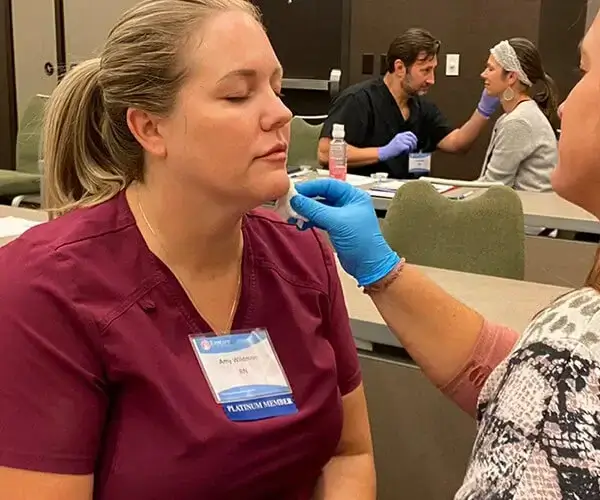What Is a Dermascope?
By Dr. Stephen Cosentino
PRESIDENT OF EMPIRE MEDICAL TRAINING
What Is a Dermascope?
A dermascope, also known as a dermoscope or dermatoscope, is a vital visual aid for skin examination. This handheld device allows trained medical professionals to gain a detailed view of the skin's surface, enhancing their ability to diagnose and assess various skin conditions.
It's important to note that a dermascope is distinct from DERMASCOPE Magazine, the official publication of Aesthetics International Association. While both relate to dermatology, they serve different purposes in the field.
The Importance of Dermascopes in Skin Care
Dermatologists and other medical professionals use dermascopes for various skin surface microscopy applications, including:
- Examining suspicious moles or lesions
- Assessing skin texture and pigmentation
- Identifying early signs of skin cancer
- Evaluating hair and scalp conditions
- Monitoring changes in skin over time
How Does a Dermascope Work?
A dermascope functions as a sophisticated magnifying glass with additional features that set it apart from traditional magnifiers:
Magnification Power
While standard magnifying glasses typically offer 2x or 3x magnification, medical-grade dermascopes provide 10x magnification. This level of detail allows professionals to observe skin structures invisible to the naked eye.
Specialized Lighting
Dermascopes employ a specific light wavelength that minimizes glare and refraction. This specialized illumination enhances visibility and allows for more precise examination of skin features.
Photographic Capabilities
Modern dermascopes often include built-in cameras, enabling professionals to capture high-resolution images during examinations. These images can be used for documentation, comparison over time, or consultation with colleagues.
The Dermoscopy Procedure
Skin surface microscopy using a dermascope is a non-invasive procedure typically performed in a medical office setting. Here's what to expect during a dermoscopy examination:
- Preparation: The provider may apply water or gel to the examination area to enhance visual contrast and improve the dermascope's operation.
- Examination: The healthcare professional moves the dermascope across the skin, pausing to inspect specific areas of interest.
- Documentation: The provider may take photographs using the dermascope's built-in camera for further analysis or future reference.
- Analysis: After the examination, the provider analyzes the results and discusses findings with the patient.
- Follow-up: Depending on the results, the provider may recommend monitoring, further testing, or develop a treatment plan.
Benefits of Dermoscopy
Dermoscopy offers several advantages in skin examination and diagnosis:
- Enhanced visualization of skin structures
- Improved accuracy in diagnosing skin conditions
- Early detection of potentially cancerous lesions
- Non-invasive and painless examination method
- Ability to monitor changes in skin lesions over time
Limitations and Further Testing
While dermascopes are powerful diagnostic tools, they have limitations:
- They cannot definitively diagnose all skin conditions without additional testing
- Some skin cancers may not be detectable through dermoscopy alone
- Proper interpretation of dermoscopic images requires specialized training and experience
In many cases, a biopsy or other tissue sampling may be necessary to confirm a diagnosis suspected through dermoscopy.
Training and Expertise in Dermoscopy
Proper use of a dermascope is a basic component of dermatology training for medical and aesthetic professionals. Proficiency in dermoscopy requires:
- Understanding of skin anatomy and pathology
- Knowledge of various dermoscopic patterns and their significance
- Practice in operating the dermascope and interpreting images
- Ongoing education to stay current with advances in the field
The Future of Dermoscopy
As technology advances, dermoscopy continues to evolve. Some emerging trends include:
- Integration with artificial intelligence for automated lesion analysis
- Development of smartphone-compatible dermascopes for telemedicine applications
- Improved 3D imaging capabilities for more comprehensive skin structure analysis
- Enhanced digital documentation and tracking systems for long-term patient monitoring
Conclusion
Dermascopes are vital in modern dermatology and skin care. By providing detailed, non-invasive examination capabilities, these tools enable healthcare professionals to offer more accurate diagnoses and better patient care. As technology continues to advance, dermascopes will likely become even more integral to skin health assessment and management.
Whether you're a healthcare professional looking to expand your skills or a patient preparing for a skin examination, understanding the capabilities and importance of dermascopes can help you appreciate the value of this diagnostic tool in dermatology.


